Travelling seminar shows project progress in Nepal
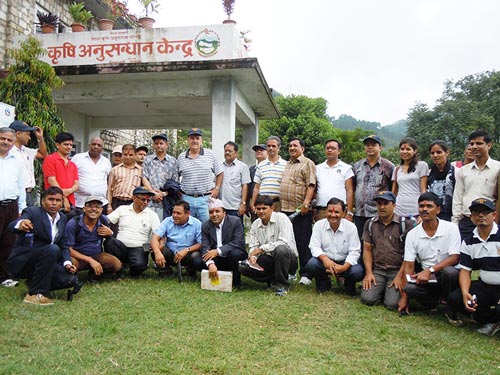
By Nirmal Gadal/CIMMYT
A three-day travelling seminar organized by CIMMYT’s Hill Maize Research Project (HMRP) and partners gave policy makers a first-hand look at the status of maize varietal development, source seed production, agronomic interventions and seed multiplication and marketing in 20 districts of Nepal. In close partnership with the Nepal Agriculture Research Council (NARC) and the Department of Agriculture (DoA), HRMP hosted this third annual seminar from 27 to 30 August for 25 officials representing donors such as the Swiss Agency for Development and Cooperation (SDC) and the United States Agency for International Development (USAID), as well as organizations including the National Planning Commission, Ministry of Agriculture Development (MoAD), Ministry of Finance, non-government organizations, private companies and the media.
Participants visited a variety of sites. At the Agriculture Research Station (ARS) in the district of Dailekh, attendees interacted with scientists and observed maize research activities and conservation agriculture trials. In this area, the project is promoting intercropping white quality protein maize (Poshilo Makai-1) and off-season vegetables such as bitter gourd, tomatoes and radishes. HIV/AIDS infected women farmers in Rakam village of Dailekh were also invited to participate. “Our main resource is land,” said 30-year-old farmer Mana Sara Sijapati during a group discussion. “We must increase our production from this land to have food security in our households during the entire year.” She asked the participants for a program targeted toward farmers affected by HIV/AIDS. Ram Prasad Pulami, joint secretary at the MoAD, asked NARC and DoA representatives to respond to the request immediately.
The group then participated in an interactive program with farmers, observed seed production activities and assessed on-farm trials and demonstration plots at the Basnatamala and Jeevanjyoti Women Community Based Seed Production (CBSP) Group. Dr. G. Ortiz-Ferrara, team leader for HMRP/CIMMYT, and Pulami jointly inaugurated an HMRPfunded seed store house that was built for the CBSP group. The team also visited the Sambriddhi Agriculture Cooperative, Ltd., as well as a quality protein maize village, where conservation agriculture trials will soon be established. Ortiz-Ferrara thanked all the participants, including the HMRP team, for their active participation and support in making the seminar successful. Pulami said during his closing remarks that he appreciated HMRP’s efforts and progress, especially the partnerships between the project and a number of diverse stakeholders. He said the government of Nepal is implementing a “Mid-hill Mega Maize Production Program” focused on 40 hill districts and will utilize HMRP’s experiences and research innovations.
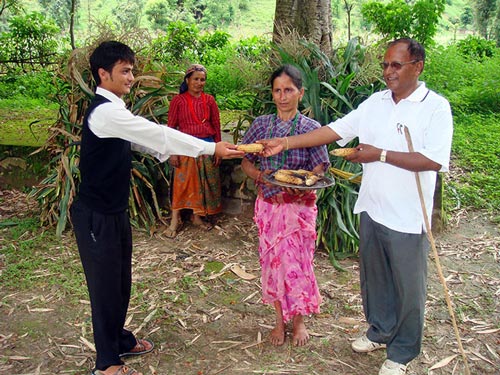
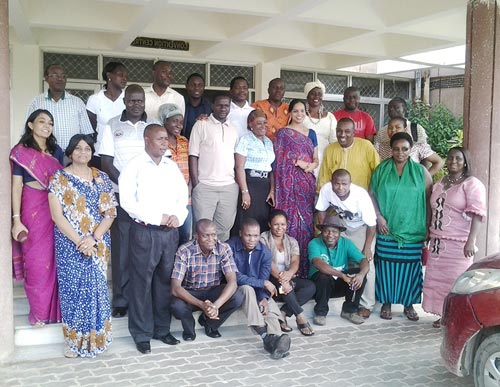

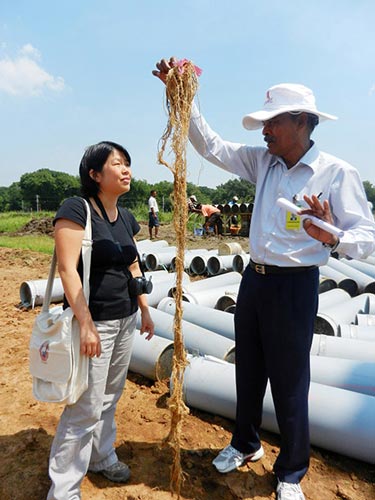
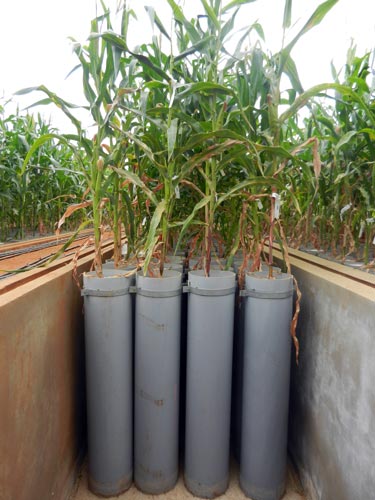
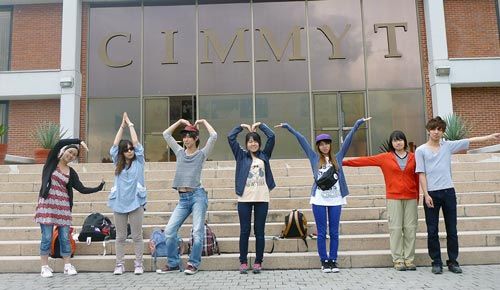
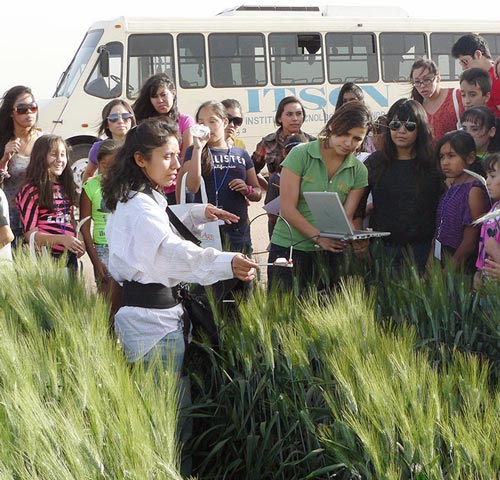
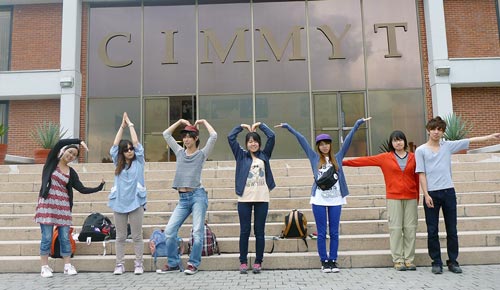
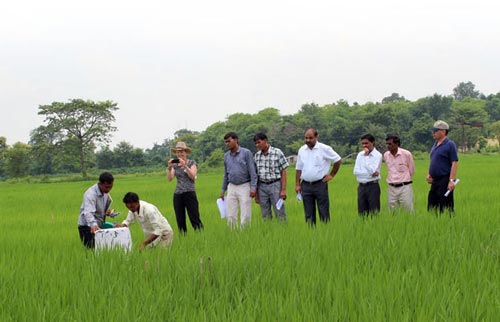
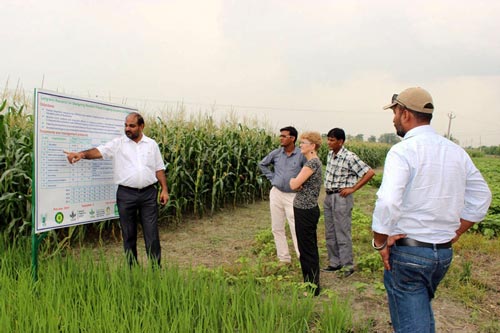
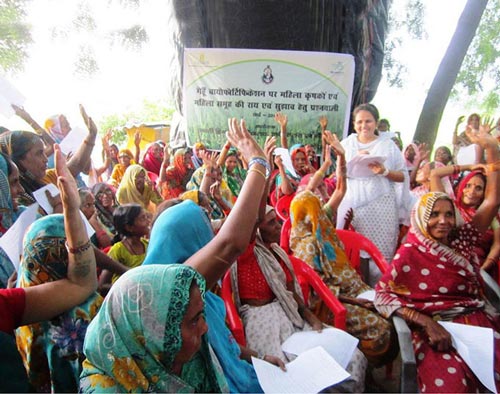
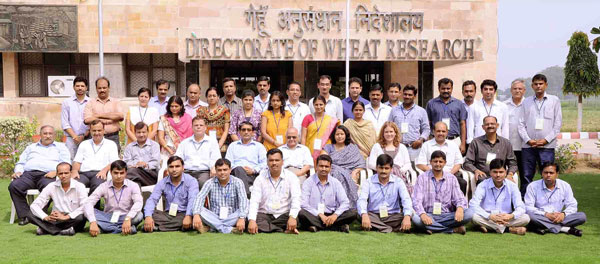 The training was for young scientists from different wheat research stations of India involved in a BMZ-funded project to increase the productivity of wheat under rising temperatures and water scarcity in South Asia. The training program attendees’ enhanced understanding of existing molecular tools for wheat breeding as well as emerging tools such as genomic selection. “Molecular tools will play an increasing role in wheat breeding to meet challenges in coming decades,” said Indu Sharma, director of DWR in Karnal. The program covered both theory and practice on the use of molecular makers in wheat breeding, especially those related to vernalization, photoperiodism and earliness per se, which could be used to enhance early heat tolerance. Practical sessions in the molecular laboratory of DWR focused on extraction of DNA, quantification and quality control of DNA, polymerase chain reaction polymerase chain reaction amplification and electrophoresis.
The training was for young scientists from different wheat research stations of India involved in a BMZ-funded project to increase the productivity of wheat under rising temperatures and water scarcity in South Asia. The training program attendees’ enhanced understanding of existing molecular tools for wheat breeding as well as emerging tools such as genomic selection. “Molecular tools will play an increasing role in wheat breeding to meet challenges in coming decades,” said Indu Sharma, director of DWR in Karnal. The program covered both theory and practice on the use of molecular makers in wheat breeding, especially those related to vernalization, photoperiodism and earliness per se, which could be used to enhance early heat tolerance. Practical sessions in the molecular laboratory of DWR focused on extraction of DNA, quantification and quality control of DNA, polymerase chain reaction polymerase chain reaction amplification and electrophoresis.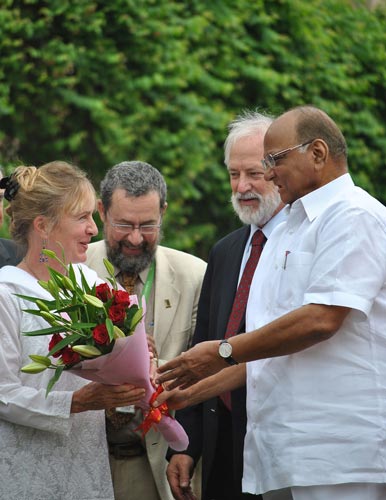
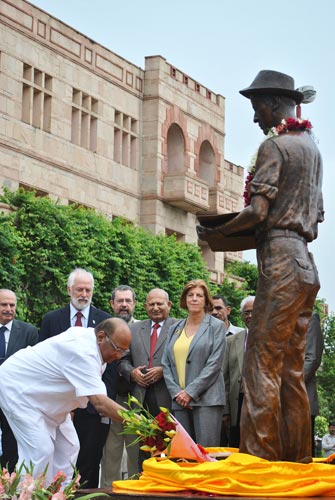
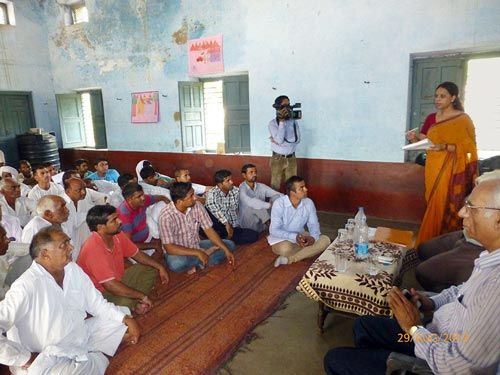
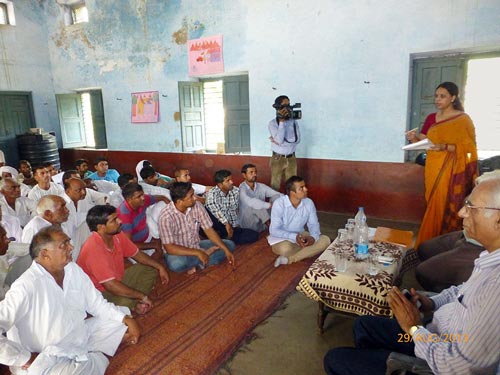
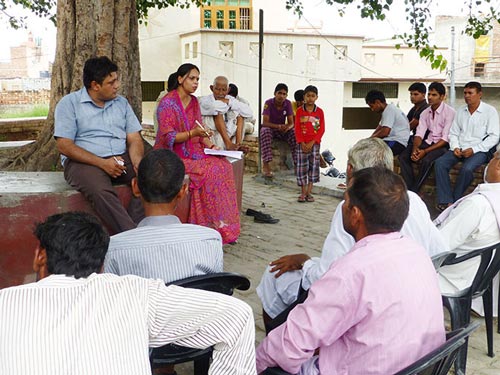
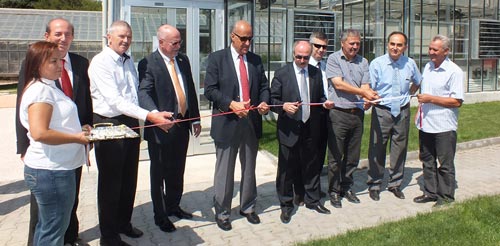
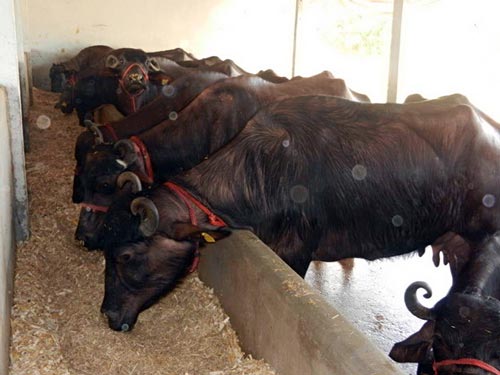 Introducing maize stover into India’s commercial dairy systems could mitigate fodder shortages and halt increasing fodder costs, according to new research by CIMMYT and the
Introducing maize stover into India’s commercial dairy systems could mitigate fodder shortages and halt increasing fodder costs, according to new research by CIMMYT and the 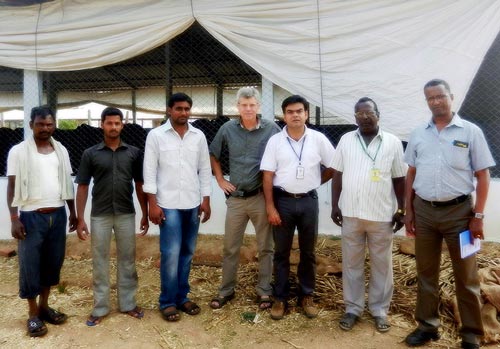 This dairy producer had maintained his eight improved Murrah buffaloes on a diet typical of that of urban and near-urban dairy systems in peninsular India. It consisted of 60% sorghum stover and 40% a homemade concentrate mix of 15% wheat bran, 54% cotton seed cake, and 31% husks and hulls from threshed pigeon-pea. Each of the dairy producer’s buffaloes consumed about 9.5 kg of sorghum stover and 6.5 kg of the concentrate mix per day and produced an average of 8.9 kg of milk per day. This dairy producer purchased sorghum stover at 6.3 Indian rupees (Rs) per kilogram. Together with the cost for concentrates, his feed cost totalled 18.2 Rs per kg of milk while his sale price was 28 Rs per kg of milk. In this trial, the dairy farmer purchased maize stover at 3.8 Rs per kg. When he substituted sorghum stover with maize stover, his average yield increased from 8.9 to 9.4 kg of milk per buffalo per day while his overall feed costs decreased from 18.2 to 14.5 Rs per kg of milk per day. The substitution of sorghum stover with maize increased his profits from 3.7 Rs per kg of milk, apart from an additional 0.5kg milk per buffalo.
This dairy producer had maintained his eight improved Murrah buffaloes on a diet typical of that of urban and near-urban dairy systems in peninsular India. It consisted of 60% sorghum stover and 40% a homemade concentrate mix of 15% wheat bran, 54% cotton seed cake, and 31% husks and hulls from threshed pigeon-pea. Each of the dairy producer’s buffaloes consumed about 9.5 kg of sorghum stover and 6.5 kg of the concentrate mix per day and produced an average of 8.9 kg of milk per day. This dairy producer purchased sorghum stover at 6.3 Indian rupees (Rs) per kilogram. Together with the cost for concentrates, his feed cost totalled 18.2 Rs per kg of milk while his sale price was 28 Rs per kg of milk. In this trial, the dairy farmer purchased maize stover at 3.8 Rs per kg. When he substituted sorghum stover with maize stover, his average yield increased from 8.9 to 9.4 kg of milk per buffalo per day while his overall feed costs decreased from 18.2 to 14.5 Rs per kg of milk per day. The substitution of sorghum stover with maize increased his profits from 3.7 Rs per kg of milk, apart from an additional 0.5kg milk per buffalo.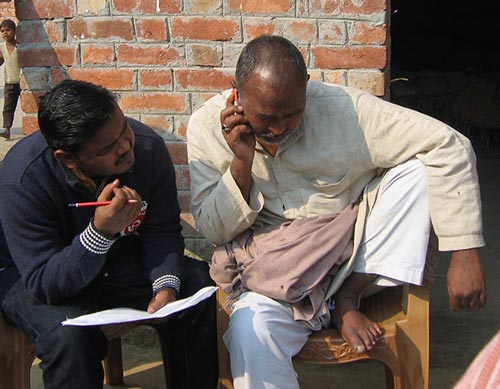 Mobile phones promise new opportunities for reaching farmers with agricultural information, but are their potential fully utilized? CIMMYT’s agricultural economist Surabhi Mittal and
Mobile phones promise new opportunities for reaching farmers with agricultural information, but are their potential fully utilized? CIMMYT’s agricultural economist Surabhi Mittal and 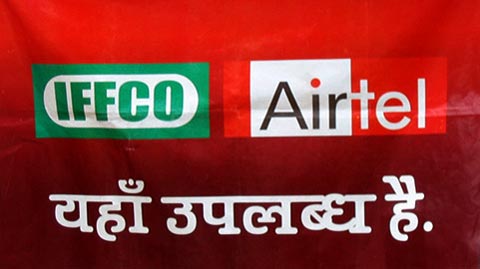 What can be done? Agro-advisory providers need to develop specific, appropriate, and timely content and update it as often as necessary. This cannot be achieved without a thorough assessment of farmers’ needs and their continuous evaluation. To ensure timeliness and accuracy of the provided information, two-way communication is necessary; Mittal and Mehar suggest the creation of helplines to provide customized solutions and enable feedback from farmers. The information delivery must be led by demand, not driven by supply. However, even when all that is done, it must be remembered that merely receiving messages over the phone does not motivate farmers to start using this information. The services have to be supplemented with demonstration of new technologies on farmers’ fields and through field trials.
What can be done? Agro-advisory providers need to develop specific, appropriate, and timely content and update it as often as necessary. This cannot be achieved without a thorough assessment of farmers’ needs and their continuous evaluation. To ensure timeliness and accuracy of the provided information, two-way communication is necessary; Mittal and Mehar suggest the creation of helplines to provide customized solutions and enable feedback from farmers. The information delivery must be led by demand, not driven by supply. However, even when all that is done, it must be remembered that merely receiving messages over the phone does not motivate farmers to start using this information. The services have to be supplemented with demonstration of new technologies on farmers’ fields and through field trials.